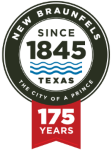Transportation
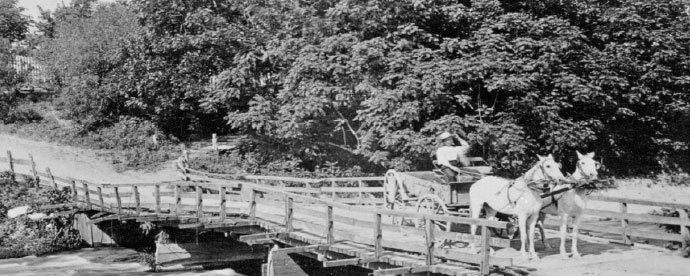
Low-water wagon bridge on San Antonio Street, 1894.
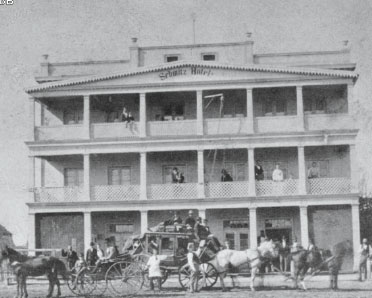
Schmitz Hotel, popular stagecoach stop, 1858.
By 1848, stage coach lines, tied to government mail contracts, were passing through New Braunfels eight times a week. Some of these lines began connecting the Texas coastal ports of entry with inland communities as far back as 1835. Harrison & McCulloch were the main lines, with Brown & Tarbos, Risher Hall (Sawyer), and Allen Stage Coach Lines arriving soon after and continuing to service the New Braunfels area until the 1870’s.
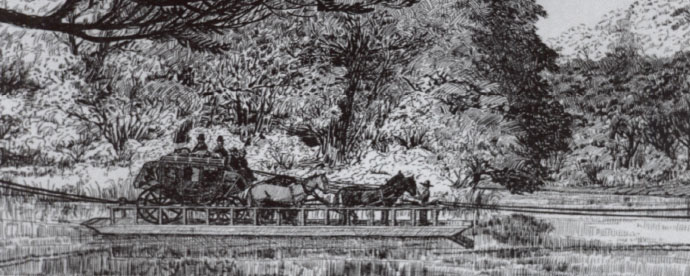
Ferry crossing Guadalupe River, drawing by P.N. Rawson, circa 1845.
Traveling east-west across Texas required finding a good spot to cross the Guadalupe River. For this reason, all trails seemed to lead to New Braunfels, and it became the preferred location. Centuries of traffic have crossed the Guadalupe at the same locations as the current Gruene and Faust Street bridges.
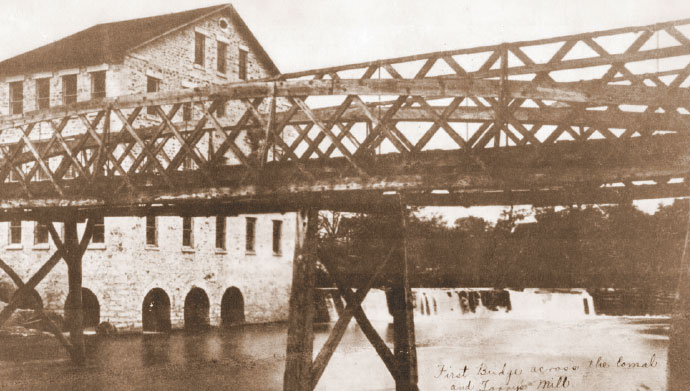
Torrey Mill and first high-water wagon bridge over the Comal River, 1854.
Nature provided the city’s first bridge when two pecan trees fell onto an island. This primitive foot bridge allowed passage to the other side of the Comal River, and became known simply as the Pecan Bridge. New Braunfels had its first elevated footbridge in 1851 at the Torrey Mill.
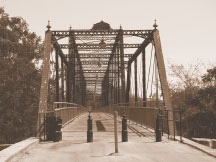
Faust Street Bridge, built 1887.
In 1880, steam locomotives, owned and operated by the International & Great Northern Railroad, crossed the Guadalupe River on a temporary trestle bridge into New Braunfels. By the 1900s the Missouri-Kansas-Texas Railroad line was making regular stops for passengers, freight, and mail, at a permanent depot in New Braunfels.
